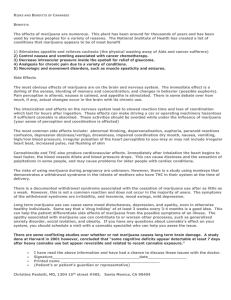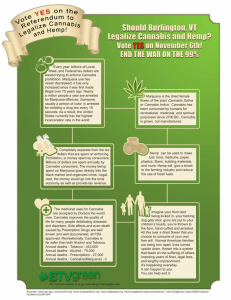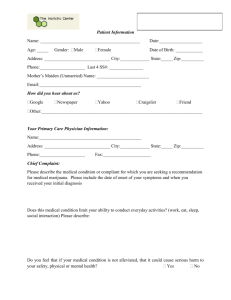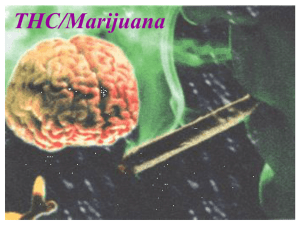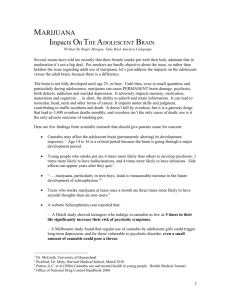- The Oregon Hospice Association
advertisement
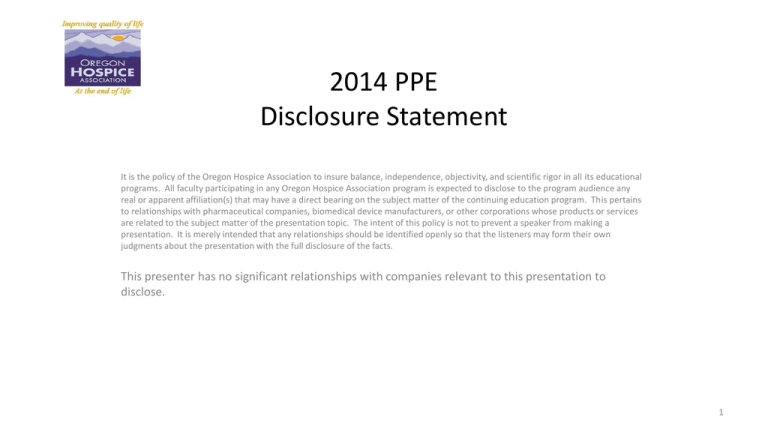
2014 PPE Disclosure Statement It is the policy of the Oregon Hospice Association to insure balance, independence, objectivity, and scientific rigor in all its educational programs. All faculty participating in any Oregon Hospice Association program is expected to disclose to the program audience any real or apparent affiliation(s) that may have a direct bearing on the subject matter of the continuing education program. This pertains to relationships with pharmaceutical companies, biomedical device manufacturers, or other corporations whose products or services are related to the subject matter of the presentation topic. The intent of this policy is not to prevent a speaker from making a presentation. It is merely intended that any relationships should be identified openly so that the listeners may form their own judgments about the presentation with the full disclosure of the facts. This presenter has no significant relationships with companies relevant to this presentation to disclose. 1 Cannabis Challenges in Community Settings Terrie Cress-Sargent BSN RN Tim Malone LCSW Victoria Johnson BA Cynthia McDaniel MSN RN What is Cannibus – the plant? Cannabis (/ˈkænəbɪs/) is a genus of flowering plants that includes three different species, Cannabis sativa,[2] Cannabis indica and Cannabis ruderalis. These species are indigenous to Central and South Asia. Cannabis has long been used for hemp fibre, for seed and seed oils, for medicinal purposes, and as a recreational drug. Industrial hemp products are made from Cannabis plants selected to produce an abundance of fiber. To satisfy the UN Narcotics Convention, some Cannabis strains have been bred to produce minimal levels of THC, the principal psychoactive constituent responsible for the high associated with it and which is obtained through the dried flowers of Cannabisplants selectively bred to produce high levels of THC and other psychoactive cannabinoids. Various extracts including hashish and hash oilare also produced from the plant. -Wikipedia What is Cannibus – the drug? ▪ Cannabis, commonly known as marijuana and by numerous other names, is a preparation of the cannabis plant intended for use as a psychoactive drug and medicine. The principal psychoactive constituent of cannabis is istetrahydrocannabinol (TCH). The plan has at least 483 known compounds including at least 84 other cannabinoids such as ascannabidiol (CBD) and cannabinol (CBN). ▪ Cannabis is often consumed for it’s psychoactive and physiologic effects, including heightened mood or euphoria, relations, increased appetite, and decreased nausea. -Wikepedia What is Cannibus? Cannabidiol (CBD) is a compound in cannabis that has medical effects but does not make people feel “stoned” and can actually counter the psychoactive effects of THC. After decades in which only high-THC Cannabis was available, CBD-rich strains are now being grown by and for medical users. CBD appears to relieve convulsions, some types of inflammation, anxiety, and nausea. THC is the main psychoactive component in marijuana buds. THC appears to help relieve pain and is neuroprotective(helps keep brain from degenerating over time). THC mimics the action of anandamide, which is a naturally occurring cannabinoid in the brain. THC is thought to be the cause of the following effects of cannabis: relaxation, euphoria, altered space-time perception and appetite stimulation. Oregon’s Program Oversight & Regulations The Oregon Medical Marijuana Program is a State registry program within the Public Health Division, Oregon Health Authority. Their role is to administer the Oregon Medical Marijuana Act as approved by the voters of the State in November 1998. The program actively pursues administrative streamlining processes in an effort to better serve patients while maintaining the highest level of confidentiality. Oregon Medical Marijuana Program (OMMP) http://public.health.oregon.gov/DiseasesConditions/ChronicDisease/M edicalMarijuanaProgram/Pages/index.aspx Oregon Revised Statute http://public.health.oregon.gov/DiseasesConditions/ChronicDisease/M edicalMarijuanaProgram/Documents/ORS.pdf Oregon Administrative Rules http://arcweb.sos.state.or.us/pages/rules/oars_300/oar_333/333_008.ht ml Rule Definitions ▪ “Patient” - means a person who has been diagnosed by an attending physician with a debilitating condition and for who the use of medical marijuana may mitigate the symptoms or effects of the person’s debilitating medical condition. ▪ “Primary Caregiver” – means a person 18 years of age or older who has “significant responsibility” for managing the well-being of a person who has been diagnosed with a debilitating medical condition and who is designated as such on the person’s application for a registry identification card or in other written notification to the Department of Health. Rule Definitions ▪ “Person Responsible for Marijuana Grow Site” – means the person who has been selected by the patient to grow their medical marijuana, and who has been registered with the Health Department for this purpose. The patient can assign their grow site card to themselves, to their designated caregiver, or to another person who will be responsible for their grow site. ▪ “Medical Use of Marijuana” – means the production, possession, delivery, or administration of marijuana, or paraphernalia used to administer marijuana, as necessary for the exclusive benefit of the patient to mitigate the symptoms or effects of his or her debilitating condition. Rule Definitions ▪ “Seedling or Start” – means a plant that has no flowers, is less than 12 inches wide and is less than 12 inches tall. All three criteria must be met to be a seedling or start. ▪ “Mature Plant” – means any plant that does not fall within the definition of a seedling or start. A mature plant can be in either the vegetative, or the flowering stage of growth. What Conditions Allow Use ▪ (a) Cancer, glaucoma, agitation incident to Alzheimer's disease, positive status for human immunodeficiency virus or acquired immune deficiency syndrome, or a side effect related to the treatment of these medical conditions; ▪ (b) A medical condition or treatment for a medical condition that produces, for a specific patient, one or more of the following: ▪ (A) Cachexia; ▪ (B) Severe pain; ▪ (C) Severe nausea; ▪ (D) Seizures, including but not limited to seizures caused by epilepsy; or ▪ (E) Persistent muscle spasms, including but not limited to spasms caused by multiple sclerosis; ▪ (c) Post-traumatic stress disorder; or ▪ (d) Any other medical condition or side effect related to the treatment of a medical condition adopted by the Authority by rule or approved by the Authority pursuant to a petition submitted under OAR 333-008-0090. How is a Card Obtained ▪ Application from person ▪ Signed document by physician - MD or DO ▪ Copy of driver’s license or state issued identification card ▪ Application fee Fee $200 – reduced fees for some populations Annual renewal 90 days before card expires Testing and Packaging of Product by Grower Testing ▪ Pesticides, mold, mildew ▪ TCH ▪ CBD Packaging ▪ Tamper proof, child proof containers ▪ Opaque ▪ Closable if more than single dose ▪ Labeled Product Types Other Routes of Delivery Challenges ▪ ▪ ▪ ▪ ▪ ▪ ▪ ▪ Finding a physician to order Application Allowable setting Access – identifying a caregiver and locating a dispensary Deciding on route of delivery Determining amount Writing instructions for person administering Inventory control Stories, Processes, and Outcomes - Panel Questions and Discussion

